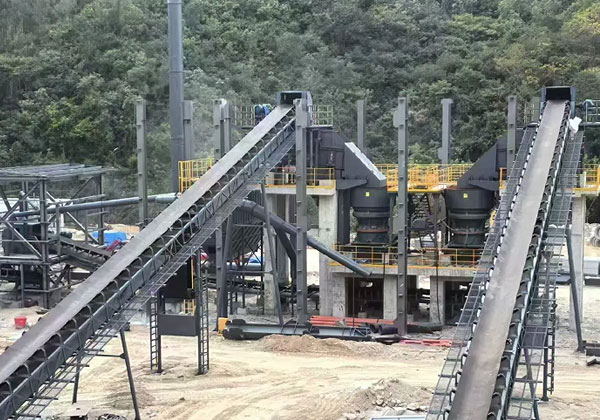Hematite crushing and beneficiation plant
Hematite, one of the most abundant forms of iron ore, is a critical raw material in steel production. Known for its high iron content and widespread availability, hematite requires specific processing to enhance its iron concentration and reduce impurities. A typical hematite processing operation involves two main stages: crushing and beneficiation. These stages are designed to convert raw ore into a high-grade material suitable for use in the steelmaking industry.
The first stage of the process is crushing, which aims to reduce the ore to a manageable size for further processing. Hematite is generally mined in large, hard lumps that need to be broken down. This is accomplished through a combination of primary, secondary, and sometimes tertiary crushers, depending on the ore size and hardness. Common equipment used includes jaw crushers for the initial breakdown, followed by cone crushers or impact crushers for finer reduction. Vibrating screens are also incorporated to classify material by size and ensure only suitably sized ore proceeds to the next stage.

Once the ore is crushed, it undergoes beneficiation, which is the process of concentrating the iron content and removing unwanted materials such as silica, alumina, and other gangue minerals. The beneficiation methods used for hematite typically include gravity separation, magnetic separation, and flotation. Gravity separation techniques such as jigging or spiral concentrators are employed to take advantage of hematite’s higher specific gravity, while low-intensity magnetic separation may be used to remove any magnetite impurities. In some cases, flotation is used to remove silicates and phosphates, enhancing the final product’s quality.
A modern hematite beneficiation plant integrates advanced automation and environmental control systems to ensure efficiency and sustainability. Tailings, the waste material from the beneficiation process, are managed carefully to reduce environmental impact. Water used during the separation processes is typically recycled, and dust control measures are implemented at crushing stations. The goal is to create a closed-loop system that minimizes waste and conserves resources, while maintaining high production output.
In conclusion, a hematite crushing and beneficiation plant is a vital component in the iron and steel production chain. By breaking down and refining raw hematite ore, the plant ensures the delivery of high-grade iron material to the market. Given the increasing demand for iron, especially in steel manufacturing, these plants are critical in meeting the global need for high-quality iron ore. The development of advanced beneficiation technologies continues to improve the efficiency and environmental sustainability of hematite processing.
